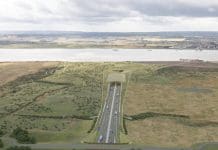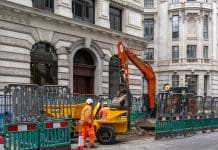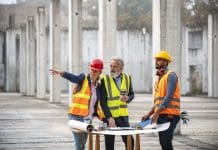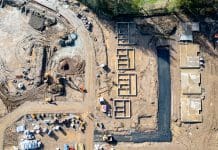Claire Cope, Head of Local Engagement at Turley Associates gauges the true value of community engagement programmes.
The government’s localism agenda requires that developers lead community consultation programmes before any planning application is submitted. But what does a good community engagement programme look like?
The Localism Act 2011 establishes a clear requirement for pre-application consultation to be carried out. The Act sets out that you must:
- Publicise the proposed application to bring it to the attention of the people who live in, or have an interest in, the affected area;
- Consult with those people to gain their feedback; and
Acknowledge and incorporate the response to the consultation within the resulting proposals and provide feedback.
Failure to comply with the regulations could result in legal challenges on planning authorisations through judicial review, adding significant cost and delay to a scheme. It is important that each engagement strategy is planned carefully to help achieve a successful result. Each strategy must be bespoke and flexible; there is no one-size-fits-all engagement programme as the issues, complexities and locality of a site will vary each time.
Improved engagement and working in partnership with local communities is vital in overcoming challenges and unlocking opportunities. Feedback is essential at all stages of this iterative process. Many clients reflect that, in the long run, good consultation saves them time and money as well as creating better, more successful and sustainable developments.
Engagement strategy
The engagement process should be considered at the earliest possible stage in the project and must be pre-application. A good engagement strategy should include the following:
- The role and objectives of community engagement;
- Engagement methodology;
- Stakeholder audit;
- The engagement toolkit;
- Timescale of engagement; and
- Reporting process.
Many local authorities have formal Statements of Community Involvement (SCI) and these should be consulted to inform the engagement strategy. A key outcome of SCIs has been to encourage ‘front-loading’, meaning that consultation with the public should begin at the earliest possible stage. The approach to the preparation of an SCI, tends to vary widely between each local authority, particularly in terms of the guidance related to how developers and landowners should engage with stakeholders and the community.
Many local planning authorities also have Community Umbrella Groups that connect and provide strong links with local resident and community groups, including those that are considered hard to reach. Hard to reach groups include young people, people with disabilities, certain ethnic groups and those living within rural communities. Early contact with such groups and the local planning authority will ensure that all of the relevant stakeholders are identified and included in the engagement process.
Audiences in a community engagement programme tend to be those directly affected by the proposals, for example, residents living immediately adjacent to a development site boundary, or local residents’ groups and parish or town councils that are well versed on the development and local plan processes. In terms of stakeholders, a good working definition is ‘those who are affected by, or significantly affect, an issue and those who possess information, resources and expertise’. It is worthwhile agreeing with the local planning authority the list of stakeholders with whom you intend to engage and to record this within the Statement of Community Engagement, submitted as part of the planning application process.
Many people will consider themselves to be stakeholders in the process because they are interested in or have a view on the proposed development. It is, therefore, important to be open and transparent about the overall approach to engagement and provide opportunities for the general public to obtain information and provide feedback. Public exhibitions, drop-in sessions, project websites and social media are good examples of ways to engage the wider community.
Engagement toolkit
An engagement programme should be appropriate and proportionate to the nature and scale of the proposals. For a major development where there is likely to be a lot of interest a number of stages within the programme are recommended to provide an opportunity to consult, receive feedback and then report after each stage.
In these circumstances focus groups or design workshops are a good way of discussing a particular issue and obtaining feedback and ideas from people who know the site and the area first-hand. Place-check or walk-and-talk events held on site and within the locality can also result in useful information and ideas and are highly interactive. These types of events ensure inclusion in the project from the outset often resulting in buy-in and support later on.
Milford Haven
This technique was employed in relation to the redevelopment of Milford Dock, Milford Haven, where the port authority is considering major redevelopment and regeneration proposals to diversify and strengthen the dock. A four-stage engagement programme was devised to ensure that the views of local residents and the business community could be captured and incorporated into the master plan.
As part of the ongoing process of engagement Turley Associates and MHPA followed a comprehensive programme that has included to date:
- The creation of a project website and a social media programme;
- Information and exhibition invites to the local catchment – approximately 6,000 letters distributed;
- Workshops, focus groups, public drop-in sessions and public exhibitions were advertised within the local press;
- Public exhibitions held in accessible locations to enable the emerging proposals to be viewed easily and for attendees to provide feedback at the exhibition, online or by post; and
- Meetings with individuals, local groups and local politicians.
Due to them being open to all, public exhibitions still have a role to play and are useful in ensuring inclusivity. They can also form a good starting point in making contacts and facilitating smaller workshops on a one-to-one basis.
Websites and social media have a strong role in an engagement programme, providing up-to-date and live information about a proposal, as they allow anyone, particularly younger people, to get involved. Social media is responsive and constantly adapting to its environment ensuring that the information that appears is up-to-date and accurate. It allows engagement in a proactive discussion that has the potential to spread the right message and influence discussions. It provides developers and landowners with the ability to quickly address misconceptions circulating within the community. In addition, it is a powerful listening tool presenting an opportunity to clearly understand the thoughts and desires of local residents and interested parties.
Feedback from engagement activities should be reviewed, considered and reported, with feedback to be given in person, at events, on-line, via email and by post. This reporting process is formalised through the Statement of Community Engagement that is submitted as part of the planning application – a document that is required on the local planning authority’s validation checklist. This document must demonstrate how comments received have been considered and, where appropriate and viable, incorporated into the scheme.
Community engagement has to now be seen as more than just another box to tick – local planning authorities require it and local communities deserve it.
Claire Cope
Associate Director and Head of Local Engagement
Turley Associates














